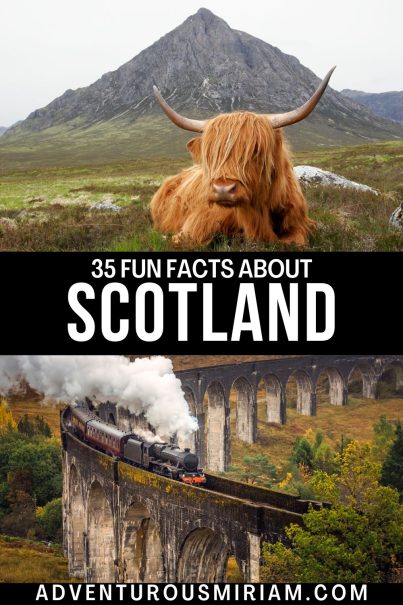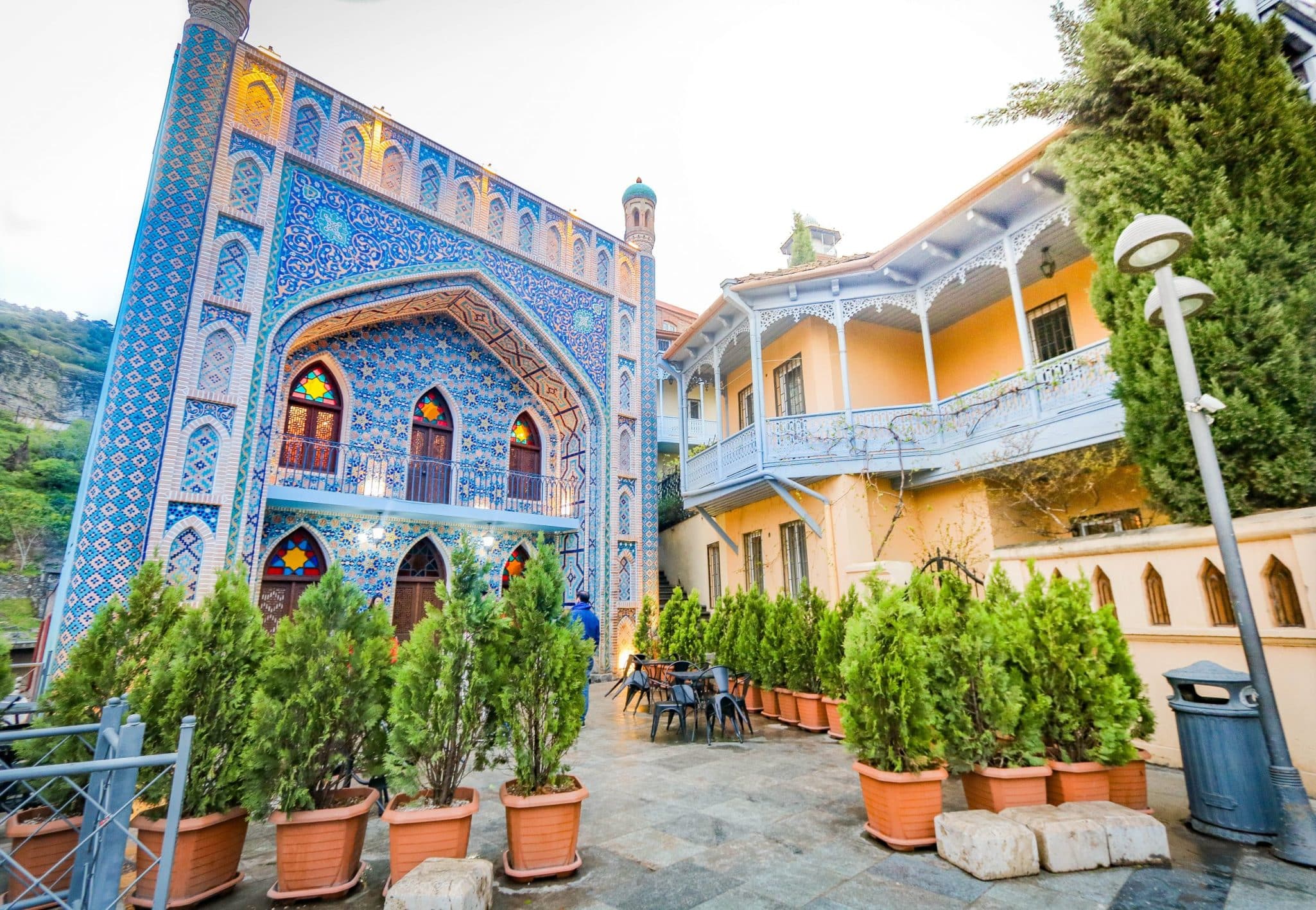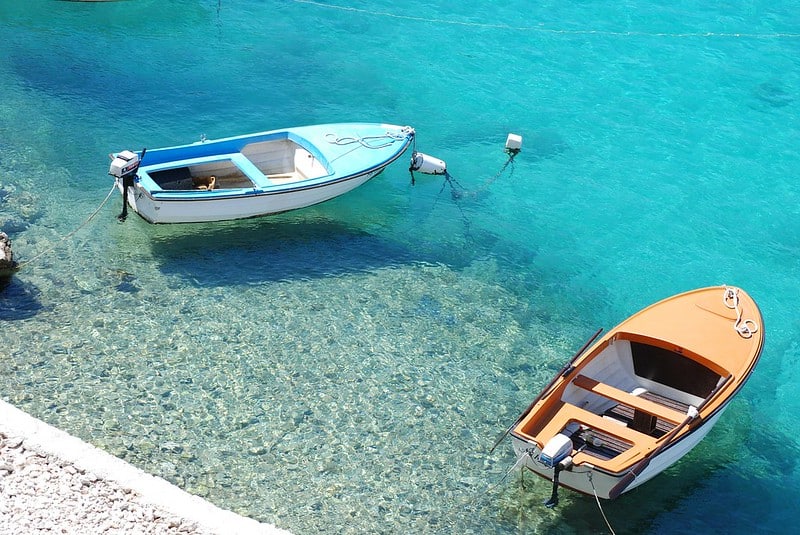37 fun facts about Scotland you probably didn’t know
Are you looking for facts about Scotland beyond the usual tales of kilts and castles?
In this post, I’ve gathered some interesting Scotland facts that might just surprise you.
We’ll look at everything from quirky historical tidbits to the lesser-known aspects of Scottish culture. And if you’ve got questions, I’ve included a FAQ section at the end, too.
Ready to dive into some Scottish trivia?
Let’s get started!
This post contains referral links for products I love. Adventurous Miriam earns a small commission at no extra cost to you if you purchase through my links. I appreciate your support ♡ Learn more
Fun facts about Scotland
1. Scotland’s national animal is the unicorn
It might sound like a fairy tale, but Scotland’s national animal is actually the unicorn, a symbol of purity and power.
This legendary creature has been linked with Scottish heraldry for centuries, appearing on the royal coat of arms and even on coins.
2. Scotland is home to some of Europe’s oldest trees
In the rugged terrain of the Scottish Highlands, you can find towering Caledonian pines that are centuries old, some even dating back 5,000 years.
These survivors of the once vast Caledonian Forest are precious, not just as a window into the past, but also for the wildlife that depends on them.
3. Golf was invented in Scotland
Golf as we know it today started in Scotland back in the 1400s.
It became so popular that it was temporarily banned because it was thought to interfere with military training.
The game persisted, and Scotland is now famous for its golf courses, including the renowned St Andrews, where the 18-hole round was standardized.
Read next: 25 best souvenirs from Edinburgh
4. Scotland has a 12,000-year-old history
Scotland’s history goes way back, with evidence of human settlement from at least 10,000 BC.
From ancient stone circles to Iron Age forts, the land is dotted with historical sites that tell the story of Scotland’s early inhabitants and their way of life.

5. Romans once invaded Scotland (and failed)
The Romans tried to conquer Scotland in the 1st century AD but were met with fierce resistance from the local tribes known as the Caledonians.
They built Hadrian’s Wall to secure the northern frontier of their empire, which is now one of the most significant Roman remains in Britain.
The wall is a reminder of the Roman attempts to control Scotland and the enduring spirit of the Scottish people who defended their land.
6. There are 790 islands in Scotland
Scotland’s got a whopping 790 islands, and out of those, just over 100 have people living on them.
The rest are untouched, giving you a sense of the wild, natural beauty that Scotland is known for.

7. Bagpipes symbolize Scottish culture
When you think of Scottish music, bagpipes probably come to mind.
They’re more than just an instrument; they’re a big part of Scottish identity, played at all kinds of important events across the country.

8. Scotland’s Queen took the throne at six days old
Mary, Queen of Scots, was only six days old when she became queen.
That’s right, just a week old and already in charge. Her reign was a rocky one, but it’s a significant chapter in Scotland’s story.
9. Scotland has Britain’s highest waterfall
The tallest waterfall in the UK, Eas a’ Chual Aluinn, is in Scotland.
It’s got a drop of 658 feet, which is pretty impressive and just one example of the incredible scenery you can find in Scotland.
10. Scotland pioneered modern coal mining
Coal mining has been around in Scotland since the 12th century.
The Scots were ahead of the game, developing techniques that would shape the way coal mining was done. It’s a big part of Scotland’s contribution to the Industrial Revolution.
11. Scotland is home to about 3,000 castles
In Scotland, you’ll find about 3,000 castles. Some are just ruins, while others are well-kept and can be toured, like the beautiful Eilean Donan Castle.
They’re a big part of Scotland’s history, showing off the country’s past with nobility and battles.

12. Edinburgh is Scotland’s historic capital
Edinburgh, the capital of Scotland, is packed with history.
You’ve got old buildings and historic sites, and it’s famous for hosting huge festivals like the Edinburgh Festivals in August that draw crowds from all over the world.
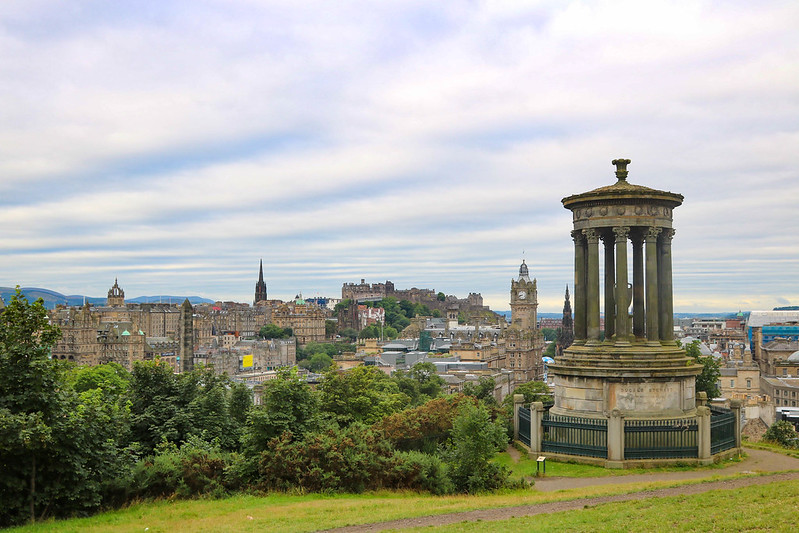
13. Scotland’s Highland Games
The Highland Games are Scotland’s way of showing off traditional sports, like tossing the caber and tug-o-war.
They’re not just about strength though; there’s music, dancing, and a whole lot of Scottish pride.
These games go way back to the old days when clans would get together and have a bit of fun.
14. The Loch Ness Monster is a Scottish legend
The Loch Ness Monster, or Nessie, is a famous part of Scottish legend. Some people say this creature lives in Loch Ness in the Highlands.
It’s one of those myths that’s well-known, and it keeps people guessing about what’s really in the lake.

15. Haggis is Scotland’s national dish
Haggis might sound a bit odd if you think about what’s in it—sheep’s heart, liver, and lungs mixed with oats and spices.
But it’s a big deal in Scotland, a hearty dish that’s especially popular on Burns Night when Scots celebrate their famous poet, Robert Burns.
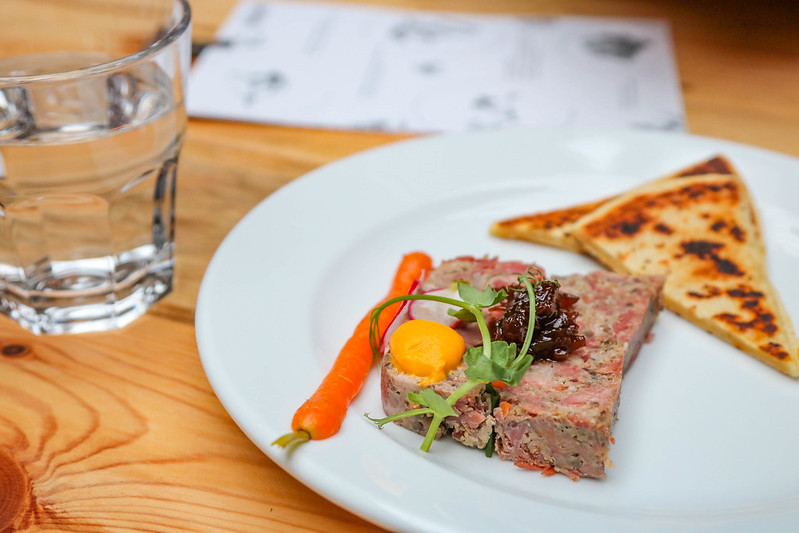
16. The thistle is Scotland’s national emblem
The thistle, a tough plant that can thrive in difficult conditions, is the national emblem of Scotland.
It represents the determination and tenacity of the Scots and their connection to the natural landscape of their country.
17. Edinburgh established the world’s first fire brigade
In 1824, Edinburgh became the first city to have an official fire brigade, organized by James Braidwood.
This pioneering move set the standard for modern municipal fire services around the world.
18. Robert Burns is celebrated as Scotland’s national poet
Robert Burns holds a special place in Scotland’s heart as the national poet.
His works, including the famous New Year’s anthem “Auld Lang Syne,” remain a significant part of Scottish cultural heritage and are celebrated each year on Burns Night.
19. The raincoat was a Scottish invention
The practical raincoat owes its existence to Scottish ingenuity.
In the 1820s, Charles Macintosh invented the first waterproof fabric, a major breakthrough that led to the raincoats we use today.
20. St Andrews is known as the ‘Home of Golf’
St Andrews is often referred to as the ‘Home of Golf’ due to its long history with the sport.
The Royal and Ancient Golf Club of St Andrews, founded in 1754, is one of the oldest and most prestigious golf clubs in the world, solidifying the town’s place in golfing history.
21. The Saltire is among the oldest national flags
The Saltire, that iconic blue and white cross you see on Scotland’s flag, has been around since the 9th century.
It’s not just old; it’s one of the oldest national flags still flying today.
22. Edradour is Scotland’s smallest distillery
Edradour stands out in Scotland for being the smallest distillery in the nation.
Tucked away in Pitlochry, Highland, since 1825, it’s been crafting whisky the old-fashioned way, and it’s pretty cozy in size.

23. The Encyclopedia Britannica originated in Scotland
The Encyclopedia Britannica, which has been a go-to resource for ages, actually got its start in Edinburgh back in the late 1760s.
It’s a hefty collection of knowledge that Scotland kicked off.
24. Scotland has over 600 square miles of lakes
Scotland’s got more than 600 square miles of lochs, or lakes, which is a lot of water!
These lochs are a big deal, shaping the country’s geography and adding some mystery to its stories.
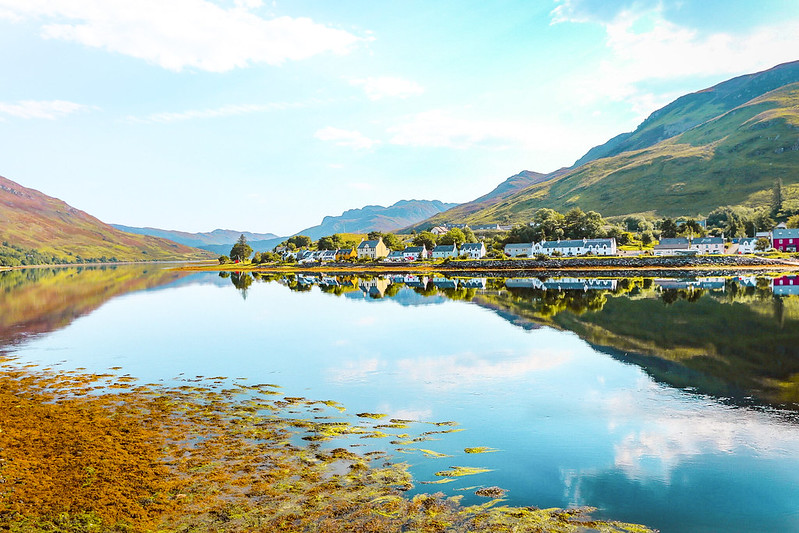
25. The world’s first color photograph was snapped in Scotland
The journey of color photography began in Scotland when James Clerk Maxwell snapped the first color photo in 1861.
It was a game-changer for how we capture and see the world.
26. Scotland has a distinct legal system
Scotland does things a bit differently when it comes to law.
Since 1707, they’ve had their own legal system, keeping their legal traditions distinct from those in England and Wales.
27. The first official International football match was in Glasgow
Back in 1872, Glasgow was the stage for a pretty epic moment in sports history—the very first official international football match, where Scotland and England went head-to-head.
It was a big deal for the beautiful game.
28. The Bank of Scotland is the UK’s oldest bank
The Bank of Scotland isn’t just old; it’s ancient by banking standards.
Since kicking off in 1695, it’s been the backbone of financial dealings in Scotland, making it the oldest bank in the UK.
29. The Hamilton Mausoleum echo lasts 15 seconds
The Hamilton Mausoleum isn’t just known for its grandeur; it’s also home to one of the longest echoes ever recorded inside a man-made structure.
Say something loud in there, and the echo hangs around for an impressive 15 seconds!
30. Glasgow is the largest city in Scotland
Glasgow, Scotland’s most populous city, is a hub of culture and architecture.
You’ll find nearly 600,000 people residing here, amidst historic 18th and 19th-century architecture intermingled with modern developments.
31. There are over 7,000 unique tartans on record
Did you know that there are over 7,000 Scottish tartans officially registered?
Even the Obamas and the character Hello Kitty have their own custom-designed tartans, reflecting tartan’s broad cultural reach beyond traditional Scottish heritage.
32. Shetland ponies are small but mighty
Shetland Ponies, a renowned breed hailing from the Shetland Islands, may stand only up to 42 inches tall, but don’t let their size fool you.
These hardy creatures were once used for pulling carts in coal mines and are an enduring symbol of Scottish resilience.
33. The Great Highland bagpipe served as a battle instrument
The unmistakable sound of the Great Highland Bagpipe has long been the soundtrack for Scottish culture.
Used historically as a battle instrument to both inspire troops and intimidate enemies, today, it’s played in formal ceremonies and traditional folk music.
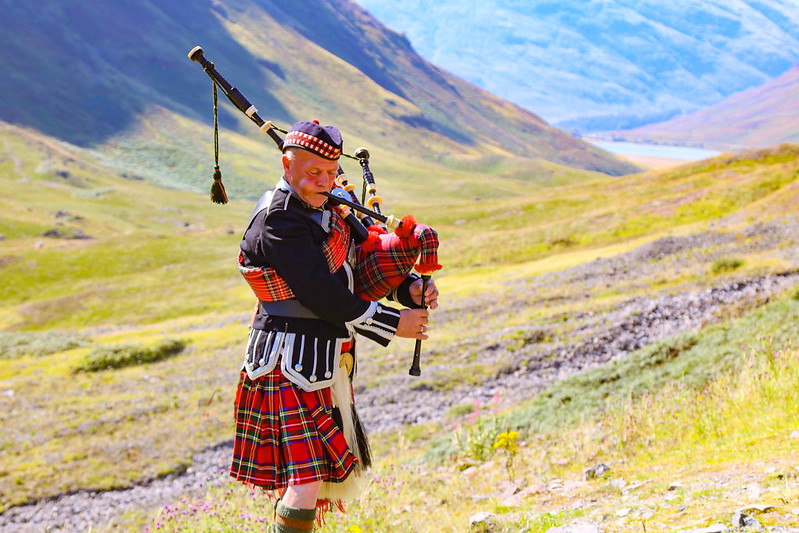
34. Edinburgh’s New Year Celebration, Hogmanay, is world-famous
Hogmanay isn’t your ordinary New Year’s Eve party.
It combines ancient customs with large-scale events, culminating in a breathtaking fireworks display over Edinburgh Castle.
35. Dolly the cloned Sheep was from Scotland
In 1996, Dolly the Sheep became a global sensation as the first mammal cloned from an adult cell.
Born at the Roslin Institute near Edinburgh, Dolly signified a breakthrough in biotechnology. After passing away, she now rests at the National Museum of Scotland in Edinburgh.
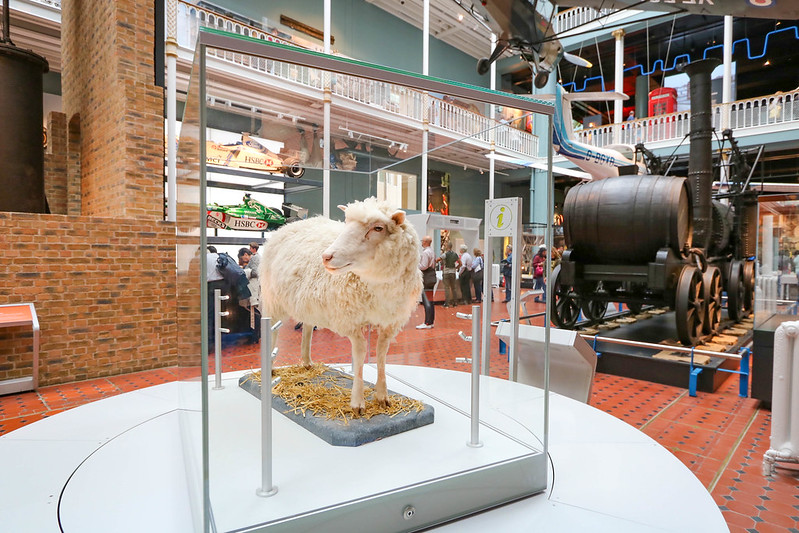
FAQ – Scotland facts
What are 5 interesting facts about Scotland?
Here are 5 interesting Scotland facts:
- Scotland’s national animal is the unicorn.
- St. Andrews is the birthplace of golf.
- Edinburgh created the world’s first fire brigade.
- The Encyclopedia Britannica started in Edinburgh.
- Hamilton Mausoleum has a 15-second echo.
What is Scotland famous for?
Scotland is famous for its scenic Highlands, historic castles, whisky, golf, the Loch Ness Monster, bagpipes, tartan kilts, and its rich cultural heritage including the Edinburgh Festivals.
What is Scotland unique for?
Scotland is unique for its own legal and educational systems, distinctive cultural practices like Highland games and ceilidhs, the iconic kilt, and being the birthplace of haggis and Scotch whisky.
More posts about Scotland
- 35 unique things to do in Scotland
- The perfect Scotland itinerary 7 days
- 20 unique reasons to visit Edinburgh now
- The best and worst time to visit Scotland
Save it!
